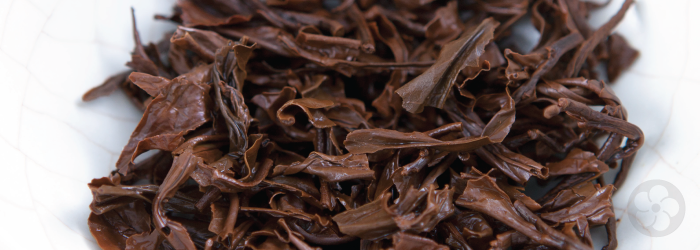What is Assam Tea?

If you’ve ever sipped an English black tea, the chances are good that it was made with Assam leaves. As the base for most English Breakfast blends, Assam is one of the best known types of tea in the western world. As with most teas, the name “Assam” carries connotations about where the tea is grown, what variety of the plant is used to make it, and even how it is crafted. But given the proliferation of blends and flavored teas that use these leaves as a base, the definition can get muddled. So, what exactly is Assam tea?
Camellia Sinensis var. assamica
The broadest definition of Assam tea includes all teas crafted with the assamica variety of the Camellia sinensis tea plant. This variety (sometimes called a subspecies) is native to southern China and northern India, and specially adapted for the environment at latitudes near the equator. In contrast, most Chinese teas are crafted from Camellia sinensis var. sinensis leaves, a smaller leafed tea plant that is more resilient in cold weather.
Assamica, the broadleaf version of the Camellia sinensis plant, is grown in India, Sri Lanka, and other regions close to the equator. Despite it’s popularity today, it was not used for commercial tea crafting until the early 1800s, after British tea merchants had already tried to transplant the sinensis variety from China to India. The project had ended in failure, when the climate of India proved to be too stressful on the smaller plants. Instead, intrepid entrepreneurs turned to the native assamica plants, introduced to them by the local tribes. In the end, the efforts to import the sinensis bush led to crossbreeding and hybridization between the two, as well.
Assam, India
These native indian plants were discovered first in the northeastern corner of the Indian subcontinent, in a state called “Assam” by the colonial British. In fact, the Camellia sinensis variety was named for this region, as it was the origin point for the first samples analyzed by British scientists. The British government began leasing land in Assam to companies in 1839, and since then, the area has become one of the most prolific tea producing areas in the world, thanks to the long growing season and naturally suited climate.
Tea is grown in the low lying areas of Assam, where floodplains offer nutrient rich soil. The climate ranges from cool and arid in the winter to hot and rainy during the monsoon season. With plenty of rainfall and sunlight during the long growing season, tea bushes grow fast and thick in Assam, allowing for harvests to occur nearly all year round. Combined with the efficient production of the colonial plantation system, Assam quickly became the backbone of the British tea industry.
Harvesting & Crafting Assam Teas
Though Assam teas of the first and second “flush” are typically processed as premium teas, the bulk of Assam production occurs during the summer months, when the broad leaves of the assamica variety grow rapidly. The robust leaves are well suited to crafting black teas, which had already become popular in Europe when the assamica variety was discovered. To maximize production, everyday Assams are crafted using the CTC, or “cut, tear, curl” method. Essentially, the leaves are sheared from the leaves, torn into small pieces, and crushed or “curled” to break cell walls and increase the speed of oxidation. While this process maximizes the quantity of tea produced, it also creates a bold, often bitter brew. In Britain, where the water is hard and fresh milk is readily available to offset the bitterness, this quality of flavor was ideal.
The Assam teas produced in India never suited the taste of Chinese tea drinkers, who valued the lasting finish and smooth mouthfeel of a tea grown slowly and processed by hand. Thus, most black teas grown in China are still crafted from the leaves of Camellia sinensis var. sinensis, as they always have been.
But during the Japanese occupation of Taiwan, Assam plants were transplanted to the island in an effort to compete in the worldwide market. These Taiwanese Assams, and hybrid cultivars developed later, manage to marry the bold flavors of the Indian variety with the subtle flavor nuances and natural sweetness of high quality Chinese teas. The broadleaf plants grow slowly in the relatively temperate climate of Taiwan, and are harvested and processed by hand to avoid developing astringency and bitterness as the leaf oxidizes.
This year, our Formosa Red Assam and hybrid cultivar #18 are both bug bitten, or mi xiang, crops. As the plant is attacked by insects, it enters a second metabolism, sending more sugars to the leaf to promote growth, while also releasing a defensive enzyme that affects flavor. Together, the reactions create a “honey fragrance” within the leaf, which is emphasized with distinctly Taiwanese crafting. Try one of these Formosa Red teas today to taste a whole new side of the classic Assam leaf.
Sign up for our newsletter to get blog updates in your inbox!







Comments on this post (0)